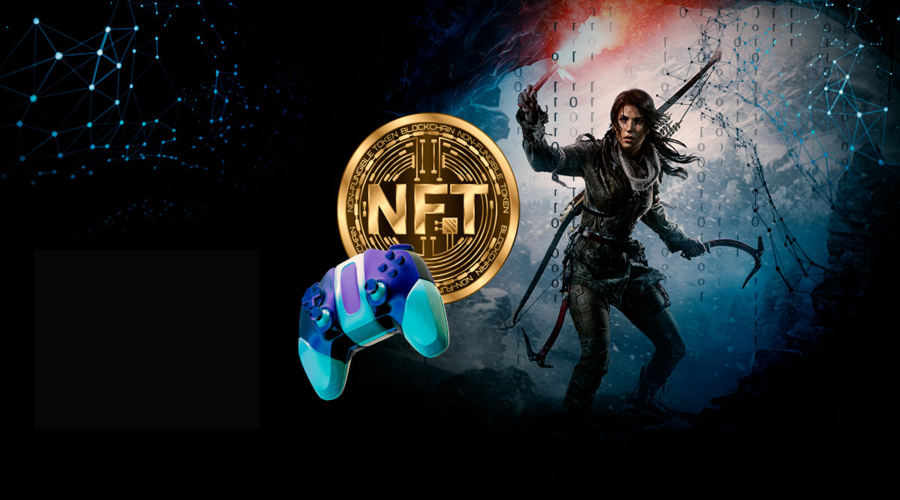The gaming industry has experienced a significant transformation with the emergence of collectibles and Non-Fungible Tokens (NFTs). These digital assets have opened up new avenues for players, developers, and collectors alike. In this article, we will explore the world of collectibles and NFTs, their impact on gaming, and what the future holds for this exciting market.
Introduction
Collectibles have always played a crucial role in the gaming industry. From physical trading cards to in-game items, these treasures have captured the imagination of players for decades. However, with the advent of blockchain technology, a new form of collectible has emerged: the Non-Fungible Token, or NFT. NFTs have gained immense popularity due to their ability to provide unique ownership and provenance of digital assets, revolutionizing the concept of ownership in gaming.
Understanding Collectibles in Gaming
Collectibles in gaming can take various forms. Traditionally, they have been physical items like action figures or trading cards associated with popular game franchises. However, in the digital age, collectibles have transitioned into virtual items that hold value within the game’s ecosystem. These digital collectibles can range from cosmetic skins for characters to rare in-game weapons or artifacts.
The evolution of collectibles in gaming has been driven by advancements in technology. With the internet and online gaming becoming mainstream, players can now showcase their collections to a global audience. Additionally, the introduction of blockchain technology and NFTs has revolutionized the concept of ownership and scarcity in the digital realm.
Introduction to NFTs
NFTs are a form of digital asset that utilize blockchain technology to establish ownership and uniqueness. Unlike cryptocurrencies such as Bitcoin or Ethereum, which are fungible and can be exchanged on a one-to-one basis, NFTs represent individual items or pieces of content. Each NFT contains a unique digital signature that verifies its authenticity and ownership.
In the gaming industry, NFTs have gained traction as a means to tokenize and trade virtual assets. These assets can include in-game items, virtual real estate, or even characters. NFTs provide players with true ownership of their virtual possessions, enabling them to buy, sell, and trade them on various marketplaces.
Benefits of Collectibles and NFTs in Gaming

- Unique Ownership: Collectibles and NFTs provide players with a sense of unique ownership over their virtual assets. Unlike traditional digital assets that can be easily duplicated or shared, NFTs guarantee the authenticity and provenance of each item. This gives players a genuine sense of pride and exclusivity in owning rare and valuable virtual items.
- Scarcity: NFTs introduce the concept of scarcity to the digital world. By creating limited editions or unique versions of virtual assets, developers can enhance the desirability of collectibles. The scarcity factor drives demand among players, making the acquisition of rare items a significant achievement and a symbol of status within the gaming community.
- Secondary Market Opportunities: NFTs enable players to participate in a dynamic secondary market for virtual assets. Players can not only collect rare items but also sell them to other players or collectors. This opens up avenues for players to generate real-world value from their in-game achievements. The ability to monetize virtual assets provides players with a new level of engagement and motivation to excel in the game.
- Increased Player Engagement: The introduction of collectibles and NFTs adds a layer of depth and engagement to the gaming experience. Players are motivated to explore the game world, complete challenges, and participate in special events to acquire rare and valuable items. This increases player engagement and immersion, as they strive to build their collections and unlock unique in-game rewards.
- Enhanced Revenue Streams for Developers: Developers can benefit from the revenue generated through NFT transactions. By implementing NFTs in their games, developers can earn a percentage from every sale or trade that occurs on the marketplace. This provides a new source of revenue and incentivizes developers to create compelling and desirable virtual assets for players to collect.
- Increased Player Retention: The desire to collect rare and valuable NFTs can significantly increase player retention. Players are more likely to stay engaged with a game if they have invested time and effort into building their collections. The long-term goal of acquiring sought-after items keeps players hooked and encourages them to continue playing and exploring the game world.
Challenges and Considerations
While collectibles and NFTs have brought exciting opportunities to the gaming industry, there are also challenges and considerations to be aware of. One of the main concerns surrounding NFTs is their environmental impact. The energy consumption required for blockchain transactions has raised questions about sustainability and carbon footprint.
Additionally, the market volatility and speculation associated with NFTs can create risks for both buyers and sellers. The value of NFTs can fluctuate significantly, leading to potential financial losses. Furthermore, the nascent nature of the NFT market has attracted scammers and fraudsters, emphasizing the need for caution and due diligence when participating in this space.
The Future of Collectibles and NFTs in Gaming
Looking ahead, the integration of collectibles and NFTs into gaming is set to evolve further. Game developers are increasingly incorporating NFTs into their economies, allowing players to truly own and trade digital assets across multiple games and platforms. This interoperability has the potential to create a vibrant ecosystem where players can seamlessly transfer their virtual possessions.
Moreover, the rise of virtual worlds and metaverses presents exciting opportunities for collectibles and NFTs. These immersive digital environments allow players to explore, socialize, and participate in various activities. With NFTs, players can showcase their collections within these virtual spaces, creating new avenues for self-expression and social interaction.
Enhanced Social Interaction
Collectibles and NFTs in gaming not only provide individual benefits but also foster enhanced social interaction within the gaming community. Here’s why:
Showcasing Unique Collections
Players can proudly display their unique collections of NFTs and rare in-game items to other players. This opens up conversations and creates a sense of admiration and camaraderie among players. The ability to showcase rare and valuable assets becomes a point of interest and can lead to engaging discussions about strategies, achievements, and trading.
Trading and Collaborating
NFTs and collectibles often involve trading between players, which encourages collaboration and interaction. Players may negotiate trades, engage in cooperative gameplay to acquire specific items, or even form specialized communities centered around specific collectibles or NFTs. This trading ecosystem brings players together, facilitating social bonds and creating a vibrant community within the game.
Community Events and Competitions
Game developers frequently organize community events and competitions that revolve around collectibles and NFTs. These events encourage players to collaborate, compete, and engage with one another. Whether it’s a collectibles hunt, an in-game treasure hunt, or a special event tied to rare NFT releases, these activities foster a sense of shared excitement and involvement, strengthening social connections among players.
Personalization and Self-Expression
Collectibles and NFTs empower players to personalize their gaming experience, allowing for self-expression and creativity. Here’s how:
Customizing Avatars and Characters
NFTs provide players with the opportunity to customize their avatars and characters with unique cosmetic items, accessories, or clothing. This personalization adds a layer of individuality to the gaming experience, allowing players to stand out and express their personality and style within the game world. The ability to mix and match different collectibles and create distinct looks further enhances self-expression.
Decorating In-Game Spaces
Some games enable players to decorate their in-game spaces, such as houses, apartments, or virtual environments. With NFTs, players can acquire exclusive and rare items to furnish and decorate their spaces, creating unique and visually appealing environments. This customization allows players to create personalized sanctuaries and showcases for their collections, making their in-game spaces truly reflective of their tastes and preferences.
Supporting Artists and Creators
NFTs in gaming often involve collaborations with artists and creators. By purchasing NFTs, players can support their favorite artists and creators directly. This direct support not only provides a sense of connection to the gaming community but also allows players to contribute to the success and recognition of talented individuals within the industry.
Value Retention and Long-Term Investment
Collectibles and NFTs in gaming have the potential for value retention, presenting opportunities for long-term investment. Here’s why:
Appreciation of Rare Items
Certain collectibles and NFTs may appreciate in value over time due to their scarcity, demand, or historical significance within the game. Players who acquire such items early on or manage to secure limited editions may witness their value increase as the game evolves or gains popularity. This appreciation adds an intriguing aspect to collecting, where players can speculate on the potential future value of certain assets.
Trading and Resale Opportunities
The secondary market for collectibles and NFTs allows players to trade or sell their items to other collectors or interested parties. This creates opportunities for players to profit from their investments or capitalize on the rarity of their acquired assets. By carefully assessing the market and understanding the demand for specific items, players can engage in strategic trading and potentially realize financial gains.
Diversification of Digital Assets
For players who are interested in diversifying their digital assets or investment portfolio, collectibles and NFTs offer a unique avenue. By acquiring a range of valuable items across different games or platforms, players can spread their risk and potentially benefit from the growth of the NFT market as a whole. This diversification allows players to participate in the broader digital asset landscape while enjoying the gaming experience.
By combining the benefits of enhanced social interaction, personalization and self-expression, and the potential for long-term value retention and investment, collectibles and NFTs in gaming provide players with a multifaceted and rewarding experience that goes beyond the core gameplay mechanics.
Conclusion
In conclusion, collectibles and NFTs have ushered in a new era in gaming. The ability to own, trade, and monetize virtual assets has transformed the relationship between players and the games they love. Collectibles have evolved from physical items to digital treasures, while NFTs have provided the means for true ownership and scarcity. As the gaming industry continues to embrace these innovations, we can expect further growth, innovation, and opportunities for players and developers alike.

